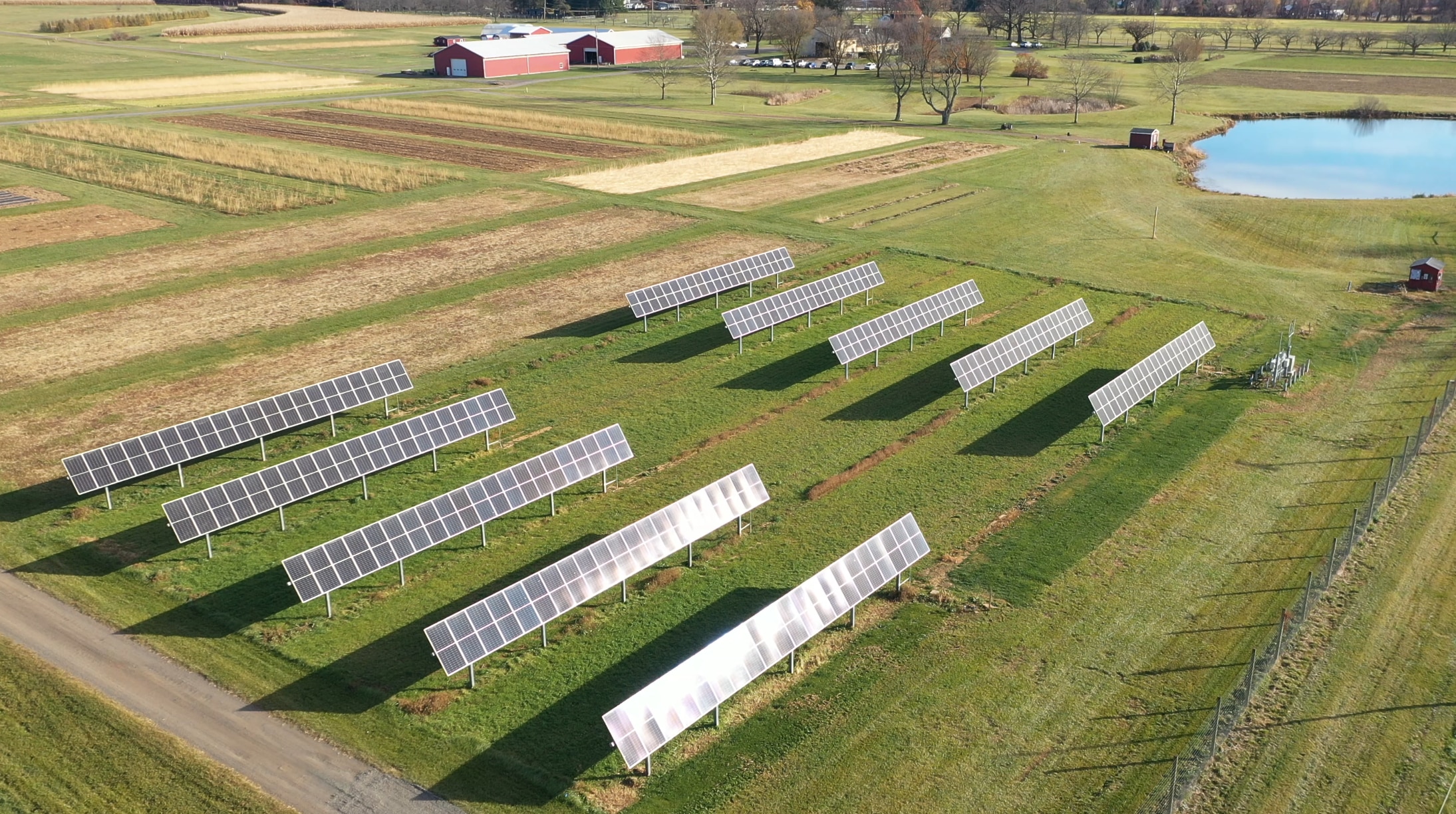Key Takeaways:
- SolarEdge Technologies has partnered with Rutgers University for an agrivoltaics research program.
- The research will inform the Dual-Use Solar Energy Pilot Program in New Jersey, a three-year, 200 MW initiative.
- Rutgers' research involves three sites with different panel mounting methods to study their impact on agriculture and energy production.
- Agrivoltaics can address climate change, provide financial stability to farmers, and enhance agricultural production.
- The collaboration aims to develop sustainable farming practices and expand the adoption of agrivoltaics.
SolarEdge Technologies, Inc. (NASDAQ: SEDG) announced that its technology has been chosen by Rutgers, the State University of New Jersey, for an innovative research and demonstration program. This initiative explores the potential of dual-use agrivoltaics, which combines agricultural production and solar energy generation on the same land, benefiting farmers across New Jersey.
Supporting the Dual-Use Solar Energy Pilot Program
Rutgers' research will support the Dual-Use Solar Energy Pilot Program, administered by the New Jersey Board of Public Utilities (NJBPU). This pilot program is a three-year, 200 MW agrivoltaics initiative designed to assess the feasibility and benefits of agrivoltaics. The collaborative effort involves the NJBPU, the New Jersey Department of Agriculture, the State Agricultural Development Committee, the New Jersey Department of Environmental Protection, and the Rutgers Agrivoltaics Program. The findings from this research will guide the establishment of a permanent Dual-Use Solar Program in New Jersey.
Diverse Research Sites
The Rutgers Agrivoltaics Program encompasses three sites, each employing different panel mounting methods to study their effects on agricultural production and electricity generation:
- Rutgers Animal Farm in New Brunswick: Features vertically mounted bifacial panels used for forage crops and beef cattle grazing (170 kWDC installed and grid-connected).
- Snyder Research and Extension Farm in Pittstown: Utilizes single-axis trackers for hay production (94.5 kWDC installed and 82.4 kWDC grid-connected).
- Rutgers Agricultural Research and Extension Center in Bridgeton: This center employs single-axis trackers with both single-wide and double-wide rows of panels for vegetable and staple crop production (255 kWDC installed and 48.6 kWDC grid-connected).
Each site will evaluate electricity output using Module-Level Power Electronics (MLPE) to precisely measure and analyze energy production.
Addressing Farmers' Challenges
Margaret Brennan-Tonetta, Director for Resource and Economic Development and Senior Associate Director of the New Jersey Agricultural Experiment Station, highlighted the importance of this research. “Agrivoltaics is a fast-growing and hugely exciting sector that provides a solution for many of the business challenges that farmers are facing today – from managing rising energy costs to moving to more sustainable production. However, we are still at the start of this journey. Our research aims to develop knowledge that will help to establish practices that can help improve both the sustainability and viability of farms through safe and regulated adoption of solar energy. We are excited to be working with SolarEdge to achieve these goals,” she said.
Expanding Solar Development
Bertrand Vandewiele, General Manager of SolarEdge in North America, emphasized the dual benefits of agrivoltaics. “Agrivoltaics is a perfect example of a real ‘win-win’. This practice allows for expanded solar development to address climate change, without the land-use challenges often associated with ground-mounted solar developments. It can also provide benefits for farmers, allowing a stable revenue stream and protection against climate hazards,” Vandewiele stated. He noted that the U.S. hosts over 500 agrivoltaics sites producing a total of 9 GW of solar energy, with growing interest and increased support and funding for the sector.
Sustainable and Profitable Farming
Agrivoltaics enables farmers to adopt more sustainable and profitable production methods without significantly reducing space for crop growth. This approach can potentially boost the production of certain shade-tolerant crops by providing protection from direct sunlight, while the cooler temperatures beneath the panels reduce water evaporation. Consumers can also feel confident about choosing produce from sustainable farms. Vandewiele added, “Through this collaboration with Rutgers University, we look forward to playing our part in helping to advance the adoption of more sustainable and profitable farming practices.”



1 Comment